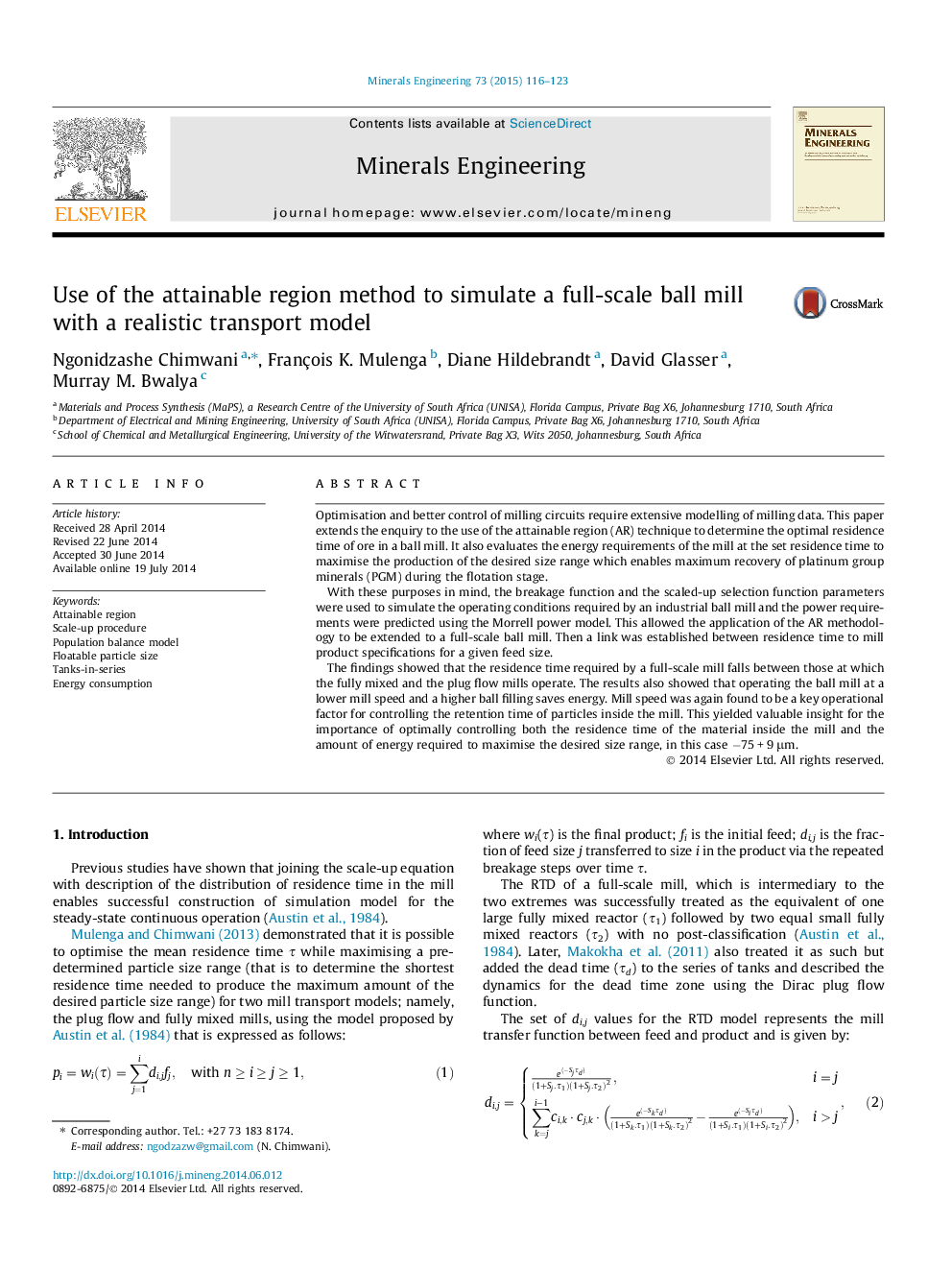| Article ID | Journal | Published Year | Pages | File Type |
|---|---|---|---|---|
| 233139 | Minerals Engineering | 2015 | 8 Pages |
•The attainable region technique was applied to optimise residence time and energy.•The optimisation was expanded from simple to tanks-in-series transport model.•Mill behaviour was predicted and the results interpreted using attainable region.•Optimal operating conditions for the residence time and energy were determined.•The conditions enable maximum production of the desired size range for flotation.
Optimisation and better control of milling circuits require extensive modelling of milling data. This paper extends the enquiry to the use of the attainable region (AR) technique to determine the optimal residence time of ore in a ball mill. It also evaluates the energy requirements of the mill at the set residence time to maximise the production of the desired size range which enables maximum recovery of platinum group minerals (PGM) during the flotation stage.With these purposes in mind, the breakage function and the scaled-up selection function parameters were used to simulate the operating conditions required by an industrial ball mill and the power requirements were predicted using the Morrell power model. This allowed the application of the AR methodology to be extended to a full-scale ball mill. Then a link was established between residence time to mill product specifications for a given feed size.The findings showed that the residence time required by a full-scale mill falls between those at which the fully mixed and the plug flow mills operate. The results also showed that operating the ball mill at a lower mill speed and a higher ball filling saves energy. Mill speed was again found to be a key operational factor for controlling the retention time of particles inside the mill. This yielded valuable insight for the importance of optimally controlling both the residence time of the material inside the mill and the amount of energy required to maximise the desired size range, in this case −75 + 9 μm.
